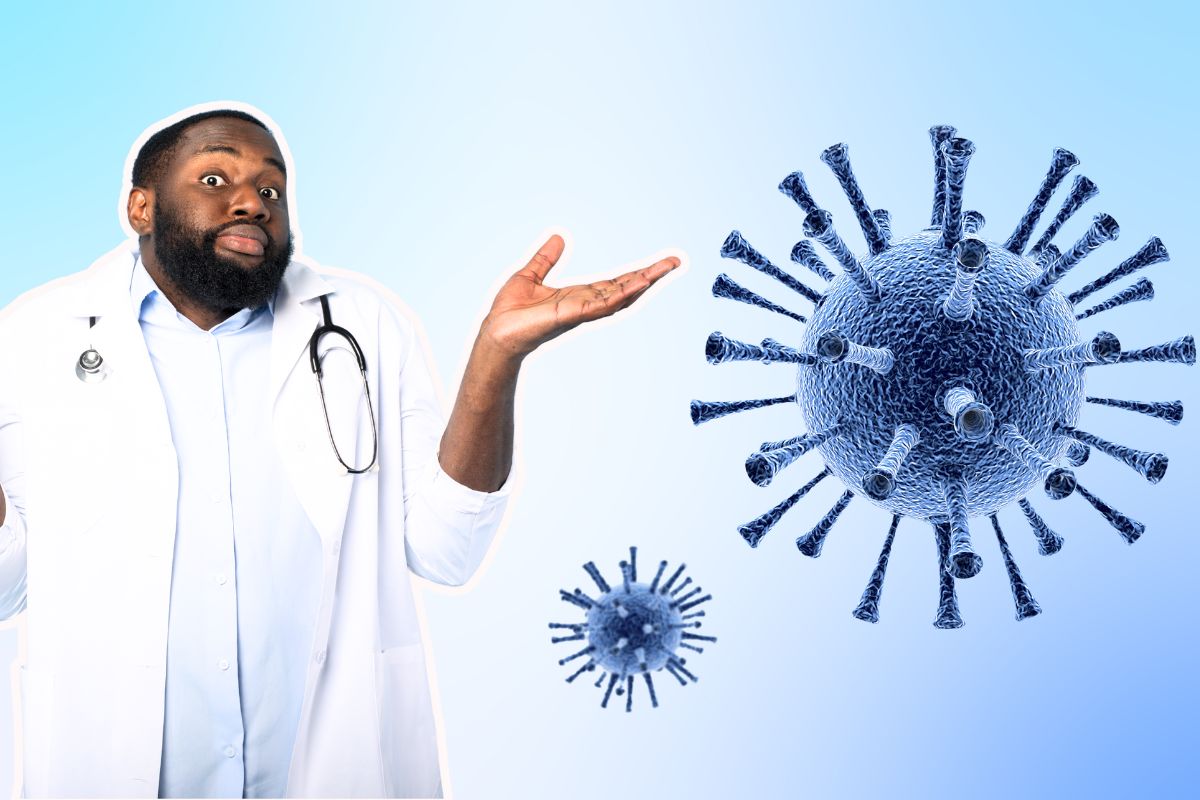Ever wondered why you can’t use antibiotics for the flu? It’s because the flu is caused by a virus, and antibiotics only work on bacteria. This is just one example of the “how are viruses different from bacteria apex differences”. In this article, we’ll tell you all the differences between viruses and bacteria. By the end, you’ll know exactly how these tiny bugs make us sick and why it matters. So, let’s get started and clear up the confusion between these microscopic troublemakers!
The Tiny Titans: Understanding Viruses and Bacteria
When it comes to getting sick, viruses and bacteria are often the culprits. But even though they can both make us feel under the weather, they’re actually quite different from each other. Let’s take a closer look at these microscopic organisms and learn how to tell them apart.
Bacteria: The Independent Microbes
Bacteria are tiny, single-celled creatures that can live in a variety of environments, from soil to water, to plants, and even in our own bodies. Some bacteria are good for us, helping with things like digestion. However, some can cause diseases like strep throat or urinary tract infections. The cool thing about bacteria is that they can live on their own because they have all the tools they need to survive and reproduce. Bacteria reproduce through a process known as binary fission, in which they divide into two separate cells.
Viruses: The Hijackers
Viruses are microorganisms that are smaller than bacteria and possess characteristics similar to those of pirates. They lack the ability to function independently, therefore they rely on taking control of our body’s cells in order to reproduce. This can cause illnesses like the common cold or the flu. Unlike bacteria, viruses need a living host – like people, plants, or animals – to grow and reproduce. They invade our cells and use them to make more viruses, which can make us sick.
Spotting the Differences: Viruses vs. Bacteria
When you’re feeling sick, it might be because of tiny organisms called viruses or bacteria. They’re too small to see with your eyes, but they can have a big impact on your health. Here’s how you can tell them apart in a simple way:
Size Matters
First off, viruses are super tiny, much tinier than bacteria. Imagine if a virus was the size of a cat, then a bacterium would be as big as a whale! That’s a huge difference in size.
What Are They Made Of?
Bacteria are like complete living cells. They have all the parts needed to live on their own. They can eat, grow, and create little bacteria babies all by themselves. Viruses, though, are like a set of instructions without a factory to make them work. They need to get inside a living thing’s cells to make more viruses.
Making More Microbes
Bacteria divide in half to make new bacteria, which is pretty straightforward. Viruses must infiltrate a functioning cell and hijack its mechanisms in order to reproduce, similar to a pirate commandeering a ship.
Fighting the Tiny Foes
When it comes to getting rid of these little bugs, we have different tools. Antibiotics are like special weapons that can destroy bacteria, but they’re useless against viruses. To fight viruses, we need things like vaccines, which teach our bodies how to defend against them, or we just let our immune system handle the invaders.
Are Viruses Living or Nonliving?
This is a question that has puzzled scientists for a long time. Let’s try to understand it in simple terms. Viruses are strange little things. They float around like dust particles until they bump into a living cell. Once they find a cell, they can sneak inside and start making copies of themselves. But here’s the catch: without a living cell to invade, they can’t do anything. They just sit there, like a seed waiting for water to grow.
No Metabolism
Now, most living things have a metabolism; they eat and produce energy to live. Viruses don’t do that. They also can’t reproduce by themselves like animals and plants do. They need to be inside a living thing to make more viruses. Because of this, many scientists say viruses are not truly alive. But, viruses do have genetic material, just like all living creatures, and they can evolve over time. So, some people think of them as being in a gray area – not quite alive, but not completely non-living either.
So, what’s the latest take on this?
Well, it seems that the debate is still ongoing. Some recent discoveries of giant viruses have blurred the lines even more because these giants have some traits that are life-like. But for now, the majority view is that viruses are not alive because they lack the key characteristics that define living organisms, like metabolism and the ability to reproduce independently.
Bacteria: Tiny, Mighty, and Definitely Alive!
Let’s talk about bacteria. These little guys are everywhere, and yes, they are very much alive! Bacteria are one of the simplest forms of life on our planet. They’re so small that you need a microscope to see them, but just because they’re tiny doesn’t mean they aren’t powerful.
What Makes Bacteria Living?
Bacteria check all the boxes for being considered living things. They eat, they grow, they move around, and they can reproduce. That’s right, bacteria can have babies, and they do it pretty fast. Some bacteria can split into two every 20 minutes!
The Good and the Bad
Most bacteria are good for us. They help with things like digesting food and keeping our bodies running smoothly. But, like in any crowd, there are a few troublemakers. Some bacteria can make us sick, but that’s not their main gig.
Bacteria and Medicine
We’ve learned how to fight the bad bacteria with medicine called antibiotics. But here’s something cool: scientists are now creating what they call ‘living medicine’ to tackle bacteria that have become resistant to antibiotics. They’re using good bacteria to fight the bad ones that cause infections, especially in places like hospitals.
The Genetic Code: Viruses vs. Bacteria
When we look at “how are viruses different from bacteria apex” in terms of their genetic material, it’s like comparing two different recipes for life.
Viruses: A Variety of Blueprints
Viruses possess either DNA or RNA as their genetic material. This is analogous to having instructions written in two distinct languages. Certain viruses carry single-stranded DNA or RNA, which can be likened to a solitary strand of information. Others have double-stranded DNA or RNA, which is like having a backup copy of the instructions. This variety allows viruses to use different strategies to infect cells and make more viruses.
Bacteria: Circular or Linear DNA
Bacteria, on the other hand, usually have DNA that is circular, forming a loop like a race track. This circular DNA floats freely inside the bacterial cell. Some bacteria can also have linear DNA, which is more like a straight line. This DNA contains all the information bacteria need to live and reproduce on their own. So, the main differences are:
- Viruses can have DNA or RNA, and it can be single or double-stranded.
- Bacteria typically have DNA that is circular, but it can also be linear.
These differences in genetic material are part of what makes viruses and bacteria so distinct from each other.
Bottom Line
Understanding “how are viruses different from bacteria: apex differences” helps us protect our health. Viruses are tiny hijackers needing cells to multiply, while bacteria are independent and diverse. Knowing these differences guides us in treating illnesses effectively.
















